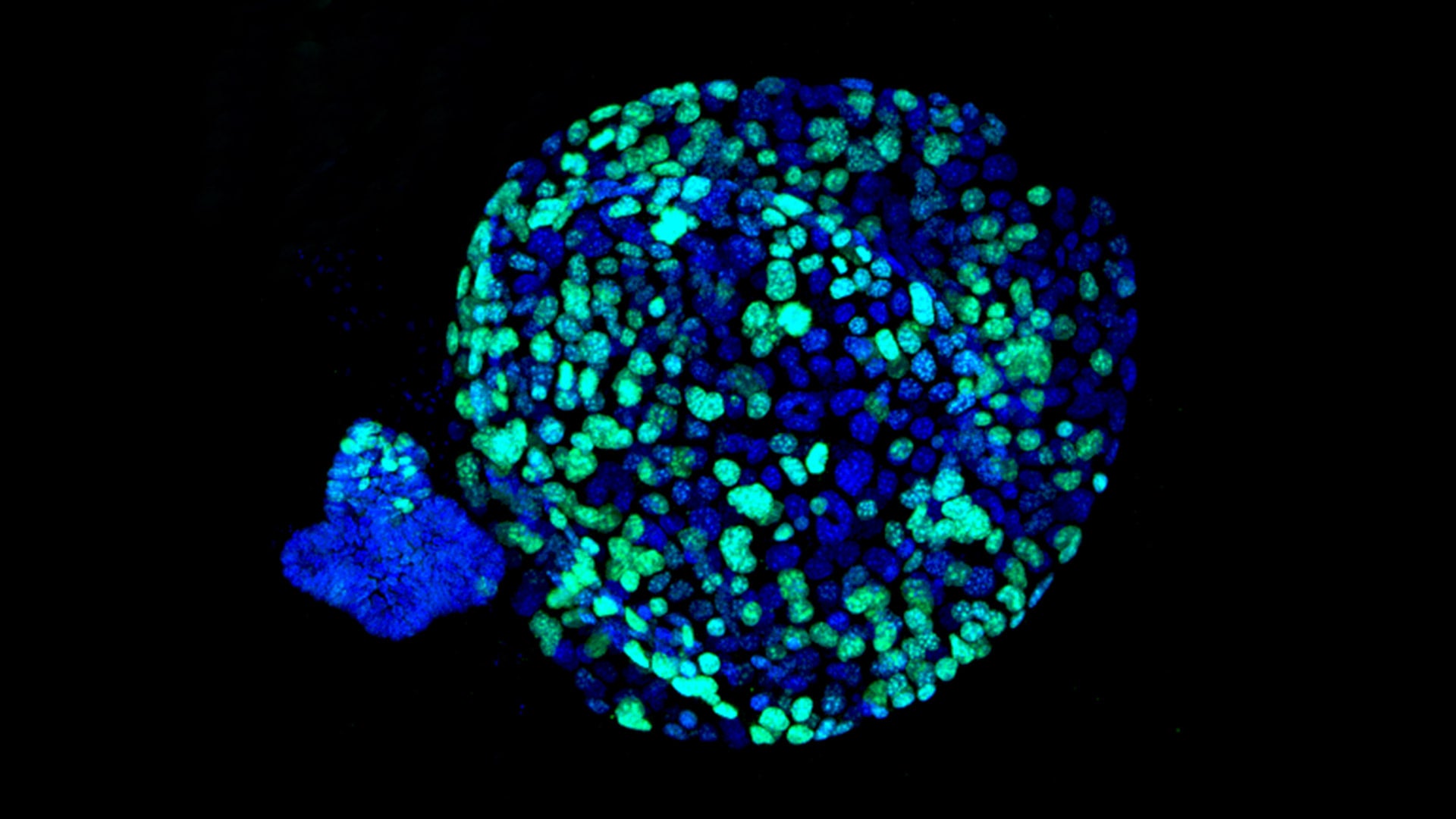Organoids are tiny balls of cells that look and behave like the organs or tumors from which they were taken. Cold Spring Harbor Laboratory (CSHL) Cancer Center Director David Tuveson pioneered their use in pancreatic cancer research. Scientists use organoids to study how cancers grow, develop, metastasize, and can be detected and treated. At the Laboratory’s new facility, biopsy cells from hundreds of cancer patients will be grown into living organoids, an important step in personalizing treatments to a particular tumor profile.
Organoids are revolutionizing cancer research, similar to the way genetically manipulated mice did in the 1990s. Mice were genetically engineered to study cancers that resembled human diseases. However, though mice are biologically similar to us, they are not human. Cancer researchers needed a way to study human cancer cells, preferably in environments that resemble the human body. Organoids fit that need. They are three-dimensional, live tissue models grown from patient tumors. If a treatment works against a patient’s biopsy-derived organoid, it predicts that the same treatment could work on the tumor that’s left inside the patient’s body.
CSHL is one of the leaders of an international consortium of organoid researchers founded in 2017, called the Human Cancer Model Initiative (HCMI). The goal is to develop 1,000 different organoid models representing both common and rare types of cancers from patients around the world. CSHL and others continue to grow their facilities. Support for organoid research at the Laboratory and the build-out of the organoid facility has come from private and government sources, including the Lustgarten Foundation, the National Cancer Institute, and the Toronto-Dominion Ready Initiative.
Developing a facility to reliably turn many different biopsy specimens into organoids is an important step on the way to personalized medicine. CSHL researchers are searching a library of pancreatic cancer organoids for biomarkers—signals that can discriminate between different types of tumors. They can then determine the kind of chemotherapies to which each type of cancer responds. In addition to classifying tumors and guiding treatment, the researchers hope the biomarkers will lead to early pancreatic cancer screening tests.
Other scientists at CSHL incorporate organoids into their research programs. Research Director David Spector and his team recently found that RNAs present in large amounts in breast cancer organoids were important for their proliferation, invasion, and migration. Assistant Professor Camila dos Santos found mechanisms for how pregnancy prevents breast cancer, suggesting a novel approach to identifying drug candidates for treatment.
Written by: Luis Sandoval, Communications Specialist | sandova@cshl.edu | 516-367-6826

